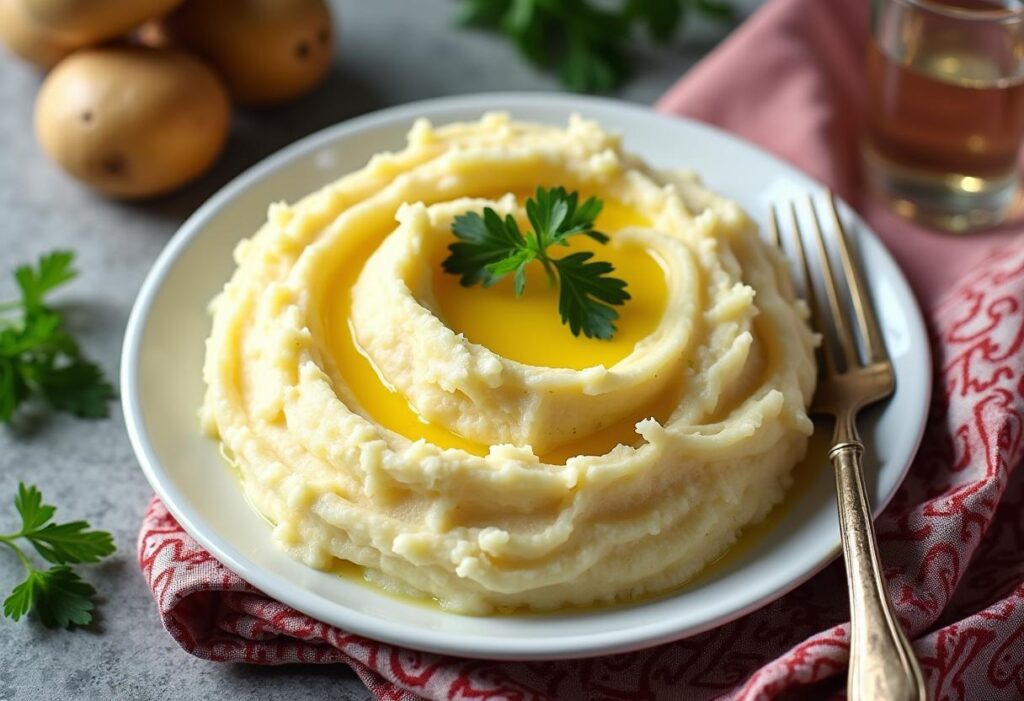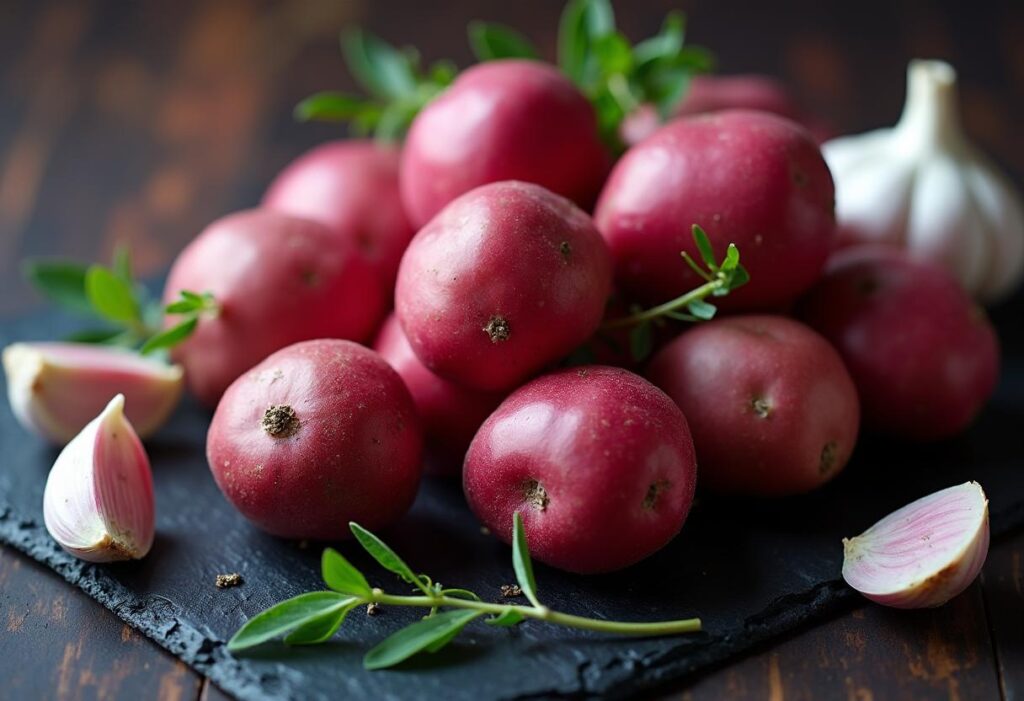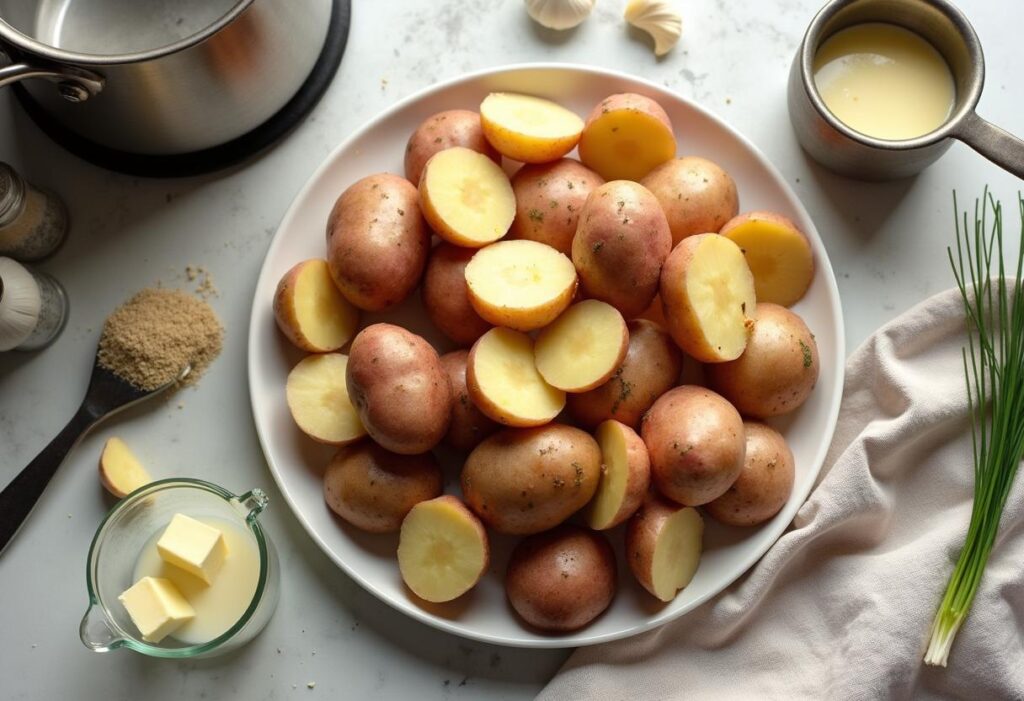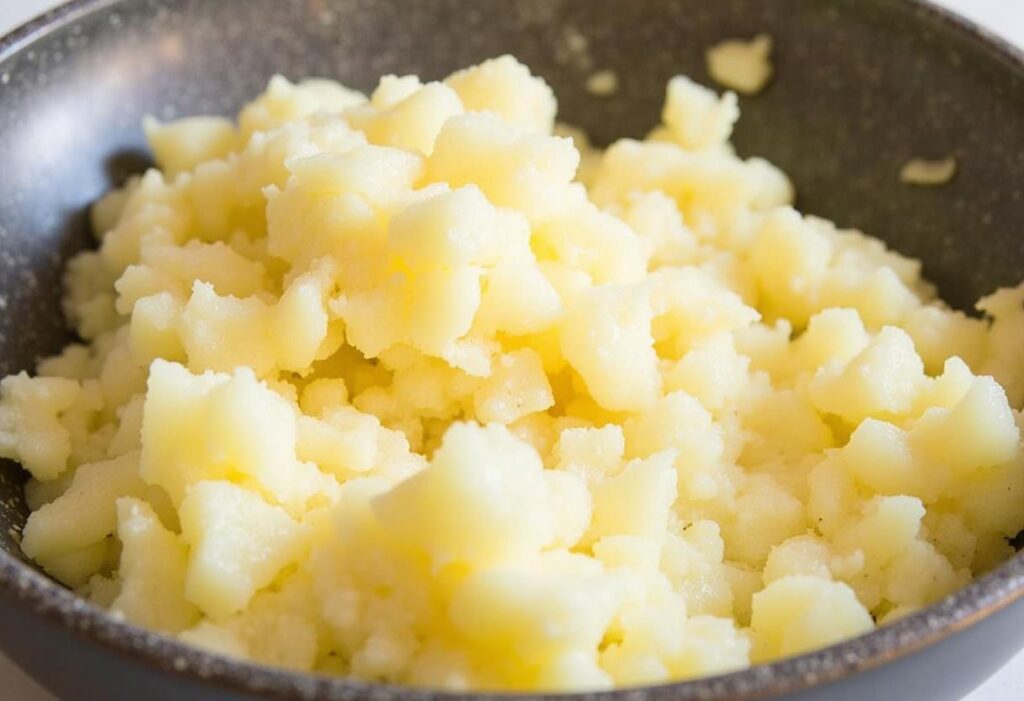
When it comes to comfort food, few dishes can rival the creamy, rich, and satisfying taste of mashed red potatoes. Known for their smooth texture and subtly sweet flavor, red potatoes are a favorite choice for creating a side dish that pairs beautifully with nearly any meal. Whether you’re preparing them for a weeknight dinner, a holiday feast, or a potluck, mashed red potatoes are versatile and crowd-pleasing.
In this guide, we’ll explore everything you need to know about making the best mashed red potatoes. From selecting the freshest potatoes to achieving that perfect creamy consistency without being sticky, we’ll cover it all. Plus, we’ll share expert tips to avoid common mistakes, flavor-enhancing ideas, and even answer your most pressing FAQs about mashed red potatoes. Let’s get started!
Table of Contents
Why Mashed Red Potatoes Are the Best Choice
What Makes Red Potatoes Special for Mashing?
Red potatoes stand out for their unique waxy texture, which makes them naturally creamy and smooth when mashed. Unlike starchy potatoes like Russets, red potatoes contain less starch and more moisture, giving them a rich, buttery consistency without much effort. Their thin skin also adds a slightly earthy flavor, enhancing the dish’s overall taste.
If you prefer a mashed potato dish with more structure rather than a completely fluffy texture, red potatoes are your go-to choice. The natural sweetness of red potatoes also complements various seasonings, making them incredibly versatile.
Health Benefits of Using Red Potatoes
Red potatoes are not only delicious but also packed with nutrients. They’re a great source of vitamin C, potassium, and dietary fiber. Leaving the skins on can boost the fiber content even more, adding nutritional value while saving prep time. For those looking for a healthier mashed potato option, red potatoes deliver a creamy texture without needing excessive amounts of butter or cream.
How Red Potatoes Compare to Other Potato Types for Mashing
While Russet and Yukon Gold potatoes are often used for mashed potatoes, red potatoes provide a distinct texture that sets them apart. Russets are high in starch, making them fluffy but prone to becoming gummy if overworked. Yukon Gold potatoes are creamier than Russets but can be denser. Red potatoes strike a perfect balance between creamy and firm, ensuring a consistent texture every time.
Choosing the Best Red Potatoes for Mashing

Signs of Fresh Red Potatoes
When selecting red potatoes for mashing, freshness is key to achieving the best flavor and texture. Look for potatoes with a smooth, firm surface and vibrant red skin. Avoid potatoes with wrinkled skin, soft spots, or green patches, as these are signs of aging or exposure to light, which can result in a bitter taste.
Fresh red potatoes should feel heavy for their size and be free of cuts, bruises, or signs of rot. If the skin is peeling off, it may indicate that the potatoes are old and not ideal for mashing.
Best Varieties of Red Potatoes for Mashed Potatoes
Not all red potatoes are created equal, and some varieties are better for mashing than others. The most common variety for mashed red potatoes is Red Bliss, known for its creamy texture and mild flavor. These potatoes hold their shape well during boiling and mash easily without becoming sticky.
Other varieties, such as Norland or Pontiac red potatoes, are also excellent options, as they share similar characteristics and work well for creamy mashes.
How to Store Red Potatoes Before Mashing
Proper storage ensures that your red potatoes stay fresh until you’re ready to cook them. Keep red potatoes in a cool, dark, and well-ventilated place. Avoid storing them in the refrigerator, as the cold temperature can convert their starch into sugar, affecting the flavor and texture.
Instead, use a breathable bag or a basket to store them, ensuring air circulation. Keep them away from onions, as the gases released by onions can cause potatoes to spoil faster. With proper storage, red potatoes can last up to two weeks, maintaining their quality for mashing.
Red Mashed Potatoes Recipe (Step-by-Step)
Ingredients for Perfect Mashed Red Potatoes

- 2 lbs red potatoes
- 4 tablespoons unsalted butter
- ½ cup heavy cream (or milk)
- 2 cloves roasted garlic (optional)
- Salt and pepper to taste
- Fresh parsley or chives for garnish
Step-by-Step Instructions
- Wash and scrub the red potatoes. Cut them into 1–2 inch chunks.
- Place the potatoes in a large pot, cover with cold salted water, and bring to a boil. Simmer for 15–20 minutes, or until fork-tender.
- Drain the potatoes and return them to the pot. Allow them to sit over low heat for 1–2 minutes to remove excess moisture.
- Add warm butter, cream, and roasted garlic (if using). Mash the potatoes with a masher or hand mixer until smooth.
- Season with salt and pepper to taste. Garnish with fresh parsley or chives before serving.
Preparing Red Potatoes for Mashing
Do You Peel Red Potatoes Before or After Boiling?
One of the most common questions when preparing red potatoes is whether to peel them before or after boiling. The beauty of red potatoes lies in their thin, edible skin, which softens beautifully during cooking. Many people prefer leaving the skins on for added texture, flavor, and nutrition.
However, if you prefer a smoother mashed potato, you can peel them before boiling. Alternatively, boiling them with the skin on makes peeling easier afterward, as the skin will loosen and slide off with minimal effort. Ultimately, the choice depends on the desired texture and presentation of your mashed potatoes.
How to Properly Wash Red Potatoes
Before boiling or peeling red potatoes, it’s essential to wash them thoroughly. Red potatoes often come with residual dirt from harvesting, so rinse them under cold running water and scrub gently with a vegetable brush to remove all debris.
Pay close attention to the eyes of the potatoes (the small indentations on the surface), as dirt can accumulate there. If the potatoes are very fresh, you may not need to scrub too hard since their skin is already tender.
Should You Leave the Skins On for Mashed Potatoes?
Leaving the skins on adds a rustic charm to mashed red potatoes, along with an earthy flavor and extra nutrients like fiber and potassium. The skins also help prevent the potatoes from absorbing too much water during boiling, which can result in a creamier texture.
However, if you prefer a velvety texture or are preparing mashed potatoes for a formal occasion, peeling the potatoes is recommended. If you decide to leave the skins on, make sure the potatoes are thoroughly cleaned to avoid unwanted grit in your dish.
How to Boil Red Potatoes for the Perfect Mash
Boiling Time for Red Potatoes
Getting the boiling time right is crucial for perfect mashed red potatoes. After cutting your potatoes into evenly sized chunks, place them in a large pot and cover them with cold water. Using cold water ensures that the potatoes cook evenly from the inside out.
Bring the water to a boil over medium-high heat, then reduce it to a gentle simmer. Red potatoes typically take 15–20 minutes to cook until they are fork-tender. To check for doneness, insert a fork or knife into a potato chunk. If it slides in easily without resistance, they’re ready.
Salt or No Salt? The Key to Perfectly Cooked Potatoes
Adding salt to the water is a must when boiling red potatoes for mashing. Salt enhances the natural flavor of the potatoes as they cook, making them taste better from the inside out. A good rule of thumb is to add 1–2 teaspoons of salt per quart of water.
Avoid skipping this step, as seasoning the potatoes after boiling won’t have the same depth of flavor. Plus, salting the water can help prevent the potatoes from tasting bland.
How to Avoid Overcooking Red Potatoes
Overcooking red potatoes can lead to waterlogged chunks, which may make your mashed potatoes too runny or gluey. To prevent this, keep an eye on the potatoes as they simmer and check for doneness frequently once they’ve been cooking for 15 minutes.
The Best Techniques for Mashing Red Potatoes

Using a Potato Masher vs. a Hand Mixer
When mashing red potatoes, choosing the right tool can make all the difference. A potato masher is ideal for those who prefer a slightly rustic texture with small chunks of potatoes. It allows for better control and avoids overworking the potatoes, which can make them gluey.
If you prefer smoother mashed potatoes, a hand mixer is a great choice. However, be cautious not to overmix, as this can break down the starches too much, resulting in a gummy texture. Stick to low speeds and mix just until the potatoes are creamy.
How to Make Red Mashed Potatoes Creamy, Not Sticky
Achieving a creamy texture without stickiness requires proper technique. After boiling, ensure the potatoes are well-drained to avoid excess moisture. You can even return them to the pot over low heat for a minute or two to evaporate remaining water.
Warm your butter and cream before adding them to the potatoes. Cold ingredients can cause the starches to seize up, resulting in a lumpy texture. Add them gradually while mashing or mixing, and stop once the desired consistency is achieved.
The Role of Butter and Cream in Mashed Potatoes
Butter and cream are the key ingredients that elevate mashed red potatoes. Butter adds richness and flavor, while cream provides a silky smoothness. For a healthier twist, you can substitute some of the cream with milk or a dairy-free alternative like almond milk.
To enhance the flavor further, try infusing your butter with garlic, rosemary, or thyme before adding it to the potatoes. These small additions can take your mashed red potatoes to the next level.
Flavoring Mashed Red Potatoes
Classic Additions: Garlic, Cheese, and Herbs
Garlic mashed red potatoes are a classic crowd-pleaser. Roasted garlic works best, as it adds a sweet, mellow flavor without overpowering the dish. Cheese lovers can incorporate shredded Parmesan, cheddar, or cream cheese for extra indulgence.
Fresh herbs like parsley, chives, or dill are also excellent for enhancing the flavor of mashed red potatoes. Simply chop them finely and fold them in right before serving.
Creative Twists to Elevate the Flavor
If you want to experiment, try adding caramelized onions, crispy bacon bits, or a dollop of sour cream. For a unique twist, mix in a little horseradish or Dijon mustard for a tangy kick.
Balancing the Seasoning for Red Mashed Potatoes
Salt and pepper are essential, but don’t forget about a dash of nutmeg for warmth or a squeeze of lemon juice to brighten the flavors. Taste as you go to ensure the seasoning is balanced.
Common Mistakes and How to Fix Them
Why Are My Mashed Potatoes Gummy?
Mashed red potatoes can become gummy when overmixed or overprocessed. This happens because excessive mixing releases too much starch. To fix this, gently fold in extra cream or butter to loosen the texture.
What to Do When Mashed Potatoes Become Sticky
If your mashed potatoes are sticky, adding additional fats like butter or sour cream can help improve the texture. You can also stir in a bit of milk to lighten them up.
How to Save Overcooked Red Potatoes for Mashing
Overcooked potatoes can become waterlogged, which makes mashing tricky. To salvage them, drain the potatoes thoroughly and pat them dry with a clean kitchen towel before mashing. Alternatively, bake the mashed mixture in a casserole dish with a topping of cheese for a delicious baked potato side dish.
When Not to Use Red Potatoes
Why Red Potatoes May Not Work for Certain Recipes
Red potatoes are excellent for mashing, but they aren’t ideal for recipes that require fluffier textures, like baked potatoes or gnocchi. Their lower starch content makes them less suitable for these dishes.
Alternatives to Red Potatoes for Special Dishes
For fluffy mashed potatoes or light gnocchi, opt for starchy varieties like Russets or Yukon Golds. These potatoes break down more easily and create a softer texture.
How to Decide If Red Potatoes Are Right for Your Meal
Consider the desired texture and flavor profile of your dish. If you want creamy, slightly dense mashed potatoes with a rich flavor, red potatoes are the way to go. For lighter, airier dishes, choose an alternative variety.
FAQs About Mashed Red Potatoes
Are Red Potatoes OK for Mashed Potatoes?
Absolutely! Red potatoes are perfect for mashing because of their creamy texture and subtle sweetness.
Which Potatoes Are Not Good for Mashing?
Starchy potatoes like Russets can become gummy if overmixed, while waxy potatoes like fingerlings may be too firm.
Do You Peel Red Potatoes Before or After Boiling?
It’s up to you! Boiling them with the skin on makes peeling easier, but the skin is thin and edible, so you can leave it on for added texture.
How Do You Make Red Mashed Potatoes Not Sticky?
Avoid overmixing, and always use warm butter and cream to achieve a smooth texture.
When Not to Use Red Potatoes?
Red potatoes aren’t ideal for dishes requiring fluffy textures, like baked potatoes or gnocchi.
Why Are My Mashed Red Potatoes Gummy?
Gummy mashed potatoes are often the result of overmixing. Use a light hand and add butter or cream gradually.
Conclusion
Mashed red potatoes are a timeless side dish that never disappoints. With their creamy texture and versatile flavor, they can complement any meal. By following the tips and techniques in this guide, you can make perfect mashed red potatoes every time. Experiment with different seasonings and additions to create your own signature dish. Enjoy!
Looking for a nutritious meal? Try this dense bean salad, packed with protein and fiber
